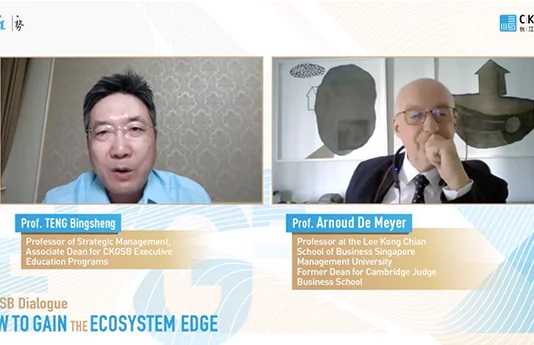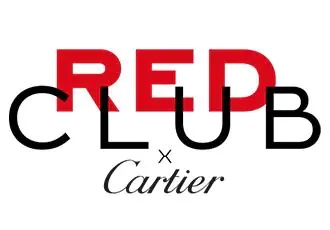Whether it’s the progress of technology, the rapid growth of the emerging markets, or the nature of capitalism to destroy and renew industries, the challenges of maturity have tended to be overlooked in recent years. Now, however, with many economies slowing down and the world’s population getting progressively grayer, this may need to change. In this series, we look at what it takes for businesses to navigate their middle years.
In part 1, we explore what it takes to lead a mature company.
Youth gets most of the attention in business as in anything else. Fresh faces, fresh ideas, and plenty of possibilities give fast-growing young companies an undeniable appeal to investors. But sooner or later, the lights and cameras go away, and even the most excited celebrated former corporate teen idols face a new set of challenges.
Managing maturity is not easy. Obviously, the attrition rate of major companies is much lower than that of start-ups, but sooner or later, even the largest companies are shunted aside by younger and nimbler competitors. One recent Santa Fe Institute study of more than 25,000 publicly traded North American companies between 1950 and 2009 found that the average public company has a half-life of about 10 years.
Contrary to expectations, however, the analysts found that the risks were constant across the company’s life span. In other words, experience did not count for much: in any given year a young company is just as likely to “die”—either to fail or much more frequently, to be acquired—as an older one.
Even the best and the biggest have a hard time staying at the top of the heap for long. Roughly 7% of the names on the S&P 500 list of the largest US companies change every year, and few companies outperform the market for more than 10-15 years, according to Richard N. Foster, a lecturer in management at the Yale School of Management. “Capital flows to the new things and then the old things look like they’re declining,” he explains.
Cultural Blinders
Beyond fickle investors, cultural insularity also takes its toll. Robert Cringely, an outspoken Silicon Valley journalist and author of The Decline and Fall of IBM, argues that an insular culture has led the company that was once the world’s undisputed tech leader into its current downward spiral.
“The only IBM CEO who didn’t spend his entire career at the company was Lou Gerstner,” Cringely writes in an email, speaking of the CEO who saved the company from bankruptcy in the early 1990s. “Sam Palmisano and Ginni Rometty are products of the IBM system—a system based on opacity (managers don’t even know their own budgets), blame (when something goes wrong heads must roll), selling their way out of any crisis (the sales department is totally dominant), and never really looking outside the organization. Sam and Ginni spent most of their effort undoing what Lou had done even though Gerstner had saved the company after 1993.”
Today, Cringely says, the company has four more layers of management than it did the day Gerstner retired. “As such, top management is isolated, lied-to by subordinates trying to avoid blame, and in turn lies (or tells delusional stories) to the organization and customers,” says the caustic Cringely. “A company can’t make good decisions if the leaders don’t know what’s happening. Middle managers can’t make good decisions if they don’t know the strategy or the budget.”
Staying at the Top
The 40% or so of top corporate giants that do last longer than 10-15 years generally do it not through innovation but a continued reshuffling of their portfolios, according to Foster. “We used to think that the hard part was innovating, but that’s not nearly as hard as getting rid of the old stuff,” he says.
Leaders at these companies generally look at their company in the same way professional investors manage portfolios do—buying and selling without sentimentality, according to Foster. Most of the 40% of companies on the S&P 500 that stay on the index year after year manage it by entering and exiting businesses.
“If you look at Berkshire Hathaway or you look at Danaher, they have totally changed all their sectors. If you look at the mix of GE businesses 35 years ago, it’s totally different. They sell a lot of stuff…. That’s how they adapt—not through innovation, but M&A,” Foster says.
But even companies with reputations as great dealmakers have a hard time staying ahead of the game, according to Foster. One case in point: “GE is reasonably good at this but we need to remember that GE’s stock price is identical to what it was in 1980 before Jack Welch took over,” he says.
Steady as She Grows
Smaller companies, however, may have another route open to them.
Hermann Simon, chairman of Simon-Kucher & Partners, a global management consultancy headquartered in Bonn, Germany, argues that the group of companies he has dubbed “the Hidden Champions” succeed by pursuing a much more conservative strategy.
These companies, 2,700-plus little-known companies that earn under $5 billion in annual revenue who in their category are either in the top three in the world or number one on the continent, are a much longer-lasting group than most publicly traded companies.
A German specialty (roughly 1,300 of the 2,700 Hidden Champions are German midcaps), these hidden champions have been in business an average of 61 years. They have an average of 2,040 employees, only 2.7% of whom leave the business in any given year. These companies earn an average of €325 million revenue a year on average, and tend to be family-owned or dominated.
Their research and development intensity (at 6% of revenue, nearly double the 3.6% invested by the top 100 global companies), strong manufacturing base, and cost-competitiveness are key factors of their success.
What sets them apart the most? “Focus,” says Simon.
The Hidden Champions tend to focus on one industry, and take firm control over their entire production process. Faber-Castell, for example, the €538 million pencil company based in Stein, Germany, grows its own wood on its own plantations.
It’s risky to focus on a few products and a few customers, he acknowledges, but it can also lead to lasting advantage: the average Hidden Champion grew 10% a year over the last 10 years, Simon says.
Nor is Simon alone in seeing the virtues of taking a narrow customer-driven focus. One unlikely proponent is Jack Welch. Once the high priest for “shareholder value”, a style of business development based entirely on financial returns, Welch said several years ago that he thought shareholder value was “a dumb idea”.
Cringely too argues that to succeed, businesses must think about goals that go beyond the purely financial. He quotes Dave Packard, co-founder of Hewlett-Packard, the Silicon Valley pioneer, who said in 1960 that he believed businesses must serve a larger purpose than financial returns.
“While this is an important result of a company’s existence, we have to go deeper to find our real reason for being… A group of people get together and exist as an institution that we call a company… to do something worthwhile—they make a contribution to society,” Packard said.




















